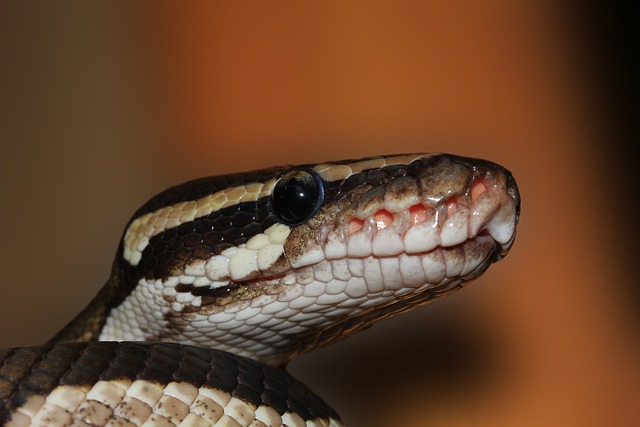Ball pythons are popular for reptile enthusiasts due to their docile nature and low maintenance requirements.
However, even the healthiest ball pythons can become ill or die unexpectedly.
Owners must be aware of the signs that their ball python may be dying to provide appropriate care and potentially save their pet’s life.
One of the most common signs of a ball python dying is a lack of appetite.
Ball pythons are known for their hearty appetites, so a sudden refusal to eat can cause concern.
Other signs to look for include lethargy, weight loss, and difficulty breathing. It is important to note that these symptoms can also indicate other health issues, so it is essential to seek veterinary care if any of these signs are observed.
In addition to physical symptoms, changes in behavior can also be a sign that a ball python is dying.
For example, a once-friendly snake may become aggressive or defensive if feeling unwell.
They may also become less active or spend more time hiding.
Owners should be familiar with their ball python’s normal behavior to recognize any changes that may indicate a health issue.
Recognizing Physical Signs
Ball pythons are generally hardy and easy to care for, but they can still fall ill and die.
As a responsible owner, monitoring your snake’s health and recognizing any physical signs indicating a problem is essential. Here are some common signs of a ball python dying:
Unusual Shedding
Shedding is a natural process for ball pythons, but if your snake is having difficulty shedding or the skin is not coming off in one piece, it could be a sign of an underlying health issue. Other signs of unusual shedding include retained eye caps and incomplete shedding of the tail.
Lack of Appetite
A healthy ball python should have a healthy appetite. If your snake refuses to eat or has stopped eating altogether, it could be a sign of illness or stress. Other signs of a lack of appetite include weight loss and lethargy.
Weight Loss
Weight loss is a common sign of illness in ball pythons. If your snake loses weight despite a healthy appetite, it could indicate an underlying health issue. Other signs of weight loss include a sunken appearance and loose skin.
Lethargy
Ball pythons are generally active and alert, but if your snake is lethargic or sluggish, it could be a sign of illness or stress. Other signs of lethargy include a lack of interest in food and movement.
Changes in Color and Texture
Changes in the color and texture of your ball python’s skin could indicate an underlying health issue. If your snake’s skin is discolored, rough, or scaly, it could be a sign of a skin infection or other health problem. Other signs of changes in color and texture include blisters, sores, and lesions.
In conclusion, recognizing the physical signs of a ball python dying is crucial in maintaining your pet’s health. If you notice these signs, you must seek veterinary care immediately to ensure the best chance of recovery.
Understanding Behavioral Changes
Ball pythons are known for their docile nature and easy-to-care-for demeanor. However, like any living creature, they can fall ill and show signs of distress.
Behavioral changes are among the most common signs of a ball python in distress. Understanding these changes can help you identify when your snake is in trouble and take appropriate action.
Decreased Activity
One of the first things to look out for is decreased activity. Ball pythons are known for being relatively inactive, but if you notice that your snake is spending more time than usual in its hide or not moving around as much, it could be a sign of illness.
In some cases, a decrease in activity could be due to stress, so it’s important to rule out any environmental factors that could be causing your snake to feel uneasy.
Aggression
Another behavioral change to look out for is aggression. Ball pythons are not typically aggressive, but if you notice that your snake is striking or hissing more than usual, it could be a sign of distress.
This could be due to pain or discomfort, so taking your snake to a veterinarian is essential to rule out any underlying health issues.
Hiding
Finally, if you
If you notice that your ball python spends more time than usual in its hide or is hiding in unusual places, it could be a sign of illness.
Ball pythons are known for seeking out dark, enclosed spaces, but if you notice that your snake is spending more time than usual in its hide or is hiding in unusual places, it could be a sign that something is wrong.
Understanding behavioral changes in your ball python can help you identify when your snake is in distress and take appropriate action. If you notice any of the above changes, you must take your snake to a veterinarian to rule out any underlying health issues.
Identifying Health Issues
Ball pythons are hardy creatures and can live up to 30 years in captivity. However, they are not immune to health problems. Some common signs indicate a ball python may be sick or dying.
Respiratory Problems
Respiratory issues are common in ball pythons and can be caused by various factors, including poor husbandry, stress, and bacterial infections. Signs of respiratory problems include wheezing, gasping, and open-mouth breathing. If left untreated, respiratory problems can lead to pneumonia and death.
Parasites
Parasites are another common health issue in ball pythons. External parasites, such as mites, can cause irritation and stress, while internal parasites, such as worms, can lead to malnourishment and other health problems. Signs of parasite infestation include lethargy, loss of appetite, and weight loss.
Mouth Rot
Mouth rot, also known as infectious stomatitis, is a bacterial infection that affects the mouth and gums of ball pythons. It is often caused by poor husbandry and can lead to serious health problems if left untreated. Signs of mouth rot include swollen gums, pus-filled blisters, and difficulty eating.
Inclusion Body Disease
Inclusion Body Disease (IBD) is a viral disease that affects ball pythons and other snake species. It is highly contagious and can be fatal. Signs of IBD include neurological symptoms, such as head tilting and lack of coordination, as well as regurgitation and weight loss.
If you notice any of these signs in your ball python, it is essential to seek veterinary care immediately. Early detection and treatment can improve the chances of a full recovery.
Professional Assessment
When a ball python shows signs of illness, it is essential to seek the advice of a veterinarian specializing in reptiles. A professional assessment can help determine the underlying cause of the snake’s symptoms and guide treatment options.
During a professional assessment, a veterinarian will conduct a physical examination of the snake, which may include checking for signs of dehydration, respiratory distress, and abnormal growths or lesions.
The veterinarian may also perform diagnostic tests, such as blood work or radiographs, to further evaluate the snake’s condition.
In addition to a physical examination and diagnostic testing, the veterinarian will also review the snake’s medical history and any recent changes in behavior or environment.
This information can help the veterinarian make an accurate diagnosis and develop an appropriate treatment plan.
Not all veterinarians are experienced in treating reptiles, so it is essential to find a veterinarian who has experience with ball pythons and other reptiles.
The Association of Reptilian and Amphibian Veterinarians (ARAV) is an excellent resource for finding a qualified reptile veterinarian in your area.
Overall, a professional assessment is crucial for identifying and treating any health issues affecting a ball python. If you notice any signs of illness in your snake, it is essential to seek veterinary care as soon as possible.
End-of-life Care
When a ball python is reaching the end of its life, providing it with the best possible care is essential to ensure its comfort and well-being. Here are some tips for end-of-life care for your ball python:
Comfortable Environment
Ensure that the ball python’s environment is comfortable and stress-free. Keep the enclosure clean and provide a warm and cozy place for the snake to rest.
You may also want to provide a hide box or other shelter for the snake to retreat if it feels uncomfortable or stressed.
Hydration
As a ball python approaches the end of its life, it may lose its appetite and become dehydrated. It is essential always to provide the snake with fresh water and monitor its water intake. You may also want to offer the snake a shallow dish of water to soak in if it seems dehydrated.
Supportive Care
If your ball python is experiencing health problems at the end of its life, it may benefit from supportive care. This may include administering medication, providing extra warmth, or offering nutritional support.
Consult a veterinarian specializing in reptile care for guidance on the best course of action.
Comforting Touch
Ball pythons may appreciate gentle handling and comforting touch during the end of their life. However, be careful not to stress the snake or cause it discomfort. If the snake seems uncomfortable or agitated, it is best to leave it alone and let it rest.
Overall, providing end-of-life care for a ball python requires patience, compassion, and a commitment to ensuring the snake’s comfort and well-being. You can help your ball python peacefully transition to the end of its life with proper care.
Conclusion
In conclusion, ball python owners must know the signs of a dying snake. While some symptoms may be subtle, others are more obvious and should not be ignored.
Owners should regularly monitor their snake’s behavior, eating habits, and overall health. Providing a proper diet, temperature, and humidity levels is essential to ensure the snake’s well-being.
If a ball python shows signs of illness or distress, it is essential to seek veterinary care immediately. Delaying treatment can lead to further complications and even death.
By knowing the signs of a dying ball python and taking proper care of the snake, owners can help ensure a long and healthy life for their pets.









